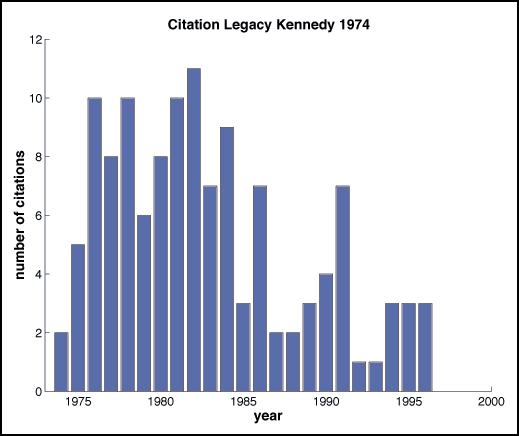

In1972 and1973 Farkas and Shorey published articles claiming that the flying male pink ballworm moth Pectinophora, in search of the female sex pheromone, orients itself chemotactically and that this mechanism is operational in the still air. Kennedy's paper claims that the moths use an optomotor anemotactic mechanism to search for a point source, and that Farkas and Shorey obtained the result because the animals had already oriented themselves anemotactically before the stream of the air stopped. This controversy drew the attention of other scientists. They began studying the pheromone stimulated behavior and anemotaxis more widely in various animals including the cockroach, honey bee and snail. This article was cited 125 times between the year 1974 and 1996. The average rate of citation per year is 5.4. Since moths are considered to be agricultural pests, their ecology and mating mechanisms have been intensely studied to aid in inventing an effective yet non-invasive trap. Many articles, therefore, are found in the field of applied entomology.
